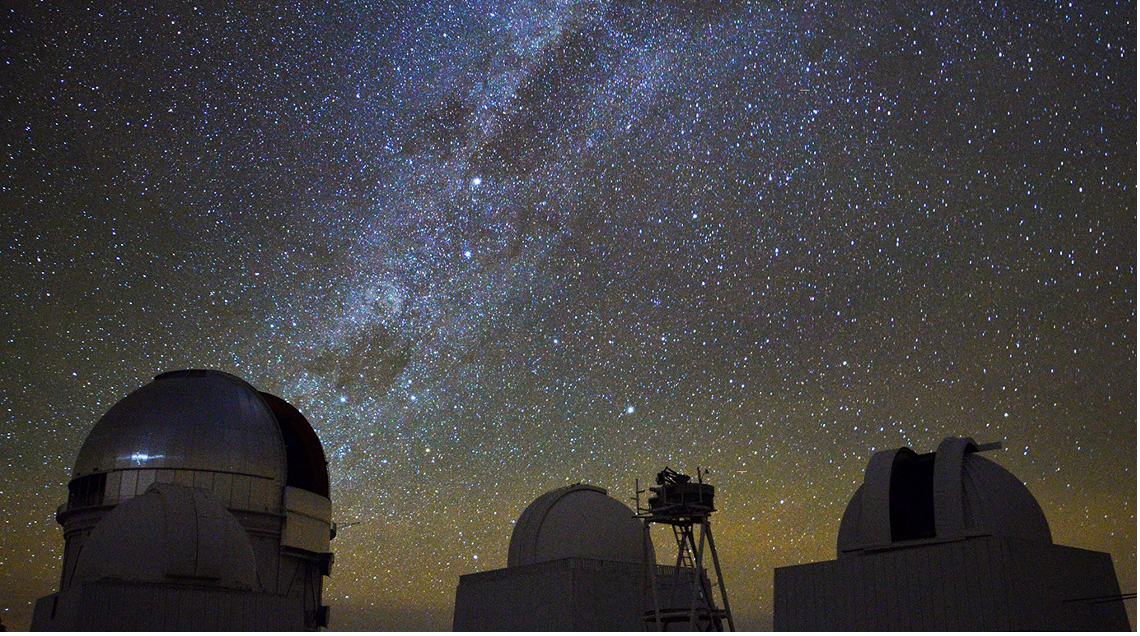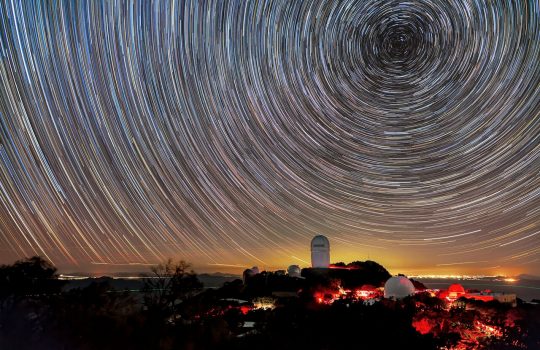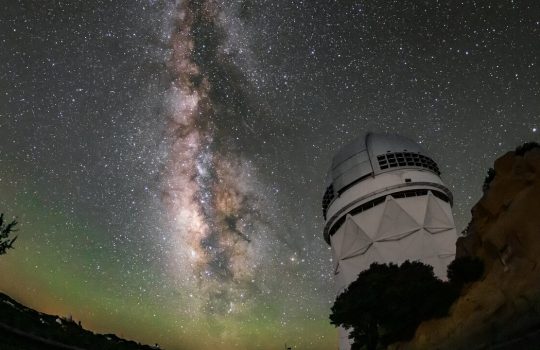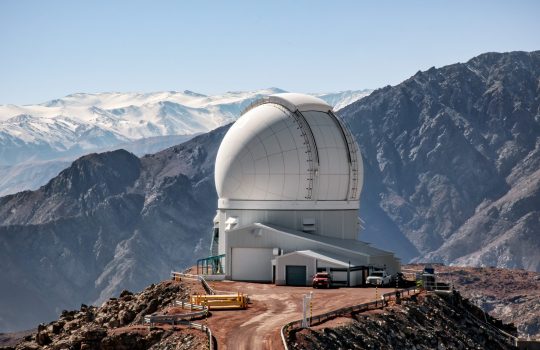Editor’s note: This article was originally written by the University of Chicago and was adapted with Fermilab information.
Sometimes to know what the matter is, you have to find it first.
When the universe began, matter was flung outward and gradually formed planets, stars and galaxies. By carefully assembling a map of that matter today, scientists can try to understand the forces that shaped the evolution of the universe.
A group of scientists, including several with the U.S. Department of Energy’s Fermi National Accelerator Laboratory, have released one of the most precise measurements ever made of how matter is distributed across the universe today.
Combining data from two major telescope surveys of the universe, the Dark Energy Survey and the South Pole Telescope, the analysis involved more than 150 researchers and is published as a set of three articles Jan. 31 as the Editors’ Suggestion in Physical Review D.

Scientists have released a new survey of all the matter in the universe, using data taken by the Dark Energy Survey in Chile (above) and the South Pole Telescope. Photo: Andreas Papadopoulos, University of Portsmouth
“One of the original motivations of building DES and SPT was to combine both sets of measurements to more powerfully constrain cosmology,” said Bradford Benson, a scientist at Fermilab and associate director of operations for SPT. “This is an exciting result because for the first time it demonstrates combining data from both experiments which has interestingly found some tension between early and late time large-scale structure growth.”
Among other findings, the analysis indicates that matter is not as “clumpy” as we would expect, based on our current best model of the universe, which adds to a body of evidence that there may be something missing from the existing standard model of the universe.
Cooling and clumps
After the Big Bang created all the matter in the universe in a very hot, intense few moments about 13 billion years ago, this matter has been spreading outward, cooling and clumping as it goes. Scientists are very interested in tracing the path of this matter; by seeing where all the matter ended up, they can try to recreate what happened and what forces would have had to have been in play.
The first step is collecting enormous amounts of data with telescopes.
In this study, scientists combined data from two very different telescope surveys: The Dark Energy Survey, which surveyed the sky over six years from a mountaintop in Chile; and the South Pole Telescope, which looks for the faint traces of radiation that are still traveling across the sky from the first few moments of the universe.
Combining two different methods of looking at the sky reduces the chance that the results are thrown off by an error in one of the forms of measurement. “It functions like a cross-check, so it becomes a much more robust measurement than if you just used one or the other,” said University of Chicago astrophysicist Chihway Chang, one of the lead authors of the studies.
In both cases, the analysis looked at a phenomenon called gravitational lensing. As light travels across the universe, it can be slightly bent as it passes objects with lots of gravity, such as galaxies.
This method catches both regular matter and dark matter — the mysterious form of matter that has only been detected due to its effects on regular matter — because both regular and dark matter exert gravity.
By rigorously analyzing these two sets of data, the scientists could infer where all the matter ended up in the universe. It is more precise than previous measurements — that is, it narrows down the possibilities for where this matter wound up — compared to previous analyses, the authors said.

By comparing maps of the sky from the Dark Energy Survey telescope (left) with data from the South Pole Telescope and the Planck satellite (right), the team could infer how the matter is distributed. Image: Yuuki Omori, University of Chicago
The majority of the results fit perfectly with the currently accepted best theory of the universe.
But there are also signs of a crack — one that has been suggested in the past by other analyses, too.
“It seems like there are slightly less fluctuations in the current universe, than we would predict assuming our standard cosmological model anchored to the early universe,” said analysis coauthor and University of Hawaii astrophysicist Eric Baxter.
That is, if you made a model incorporating all the currently accepted physical laws, then took the readings from the beginning of the universe and extrapolated it forward through time, the results would look slightly different from what we actually measure around us today.
Specifically, today’s readings find the universe is less “clumpy” — clustering in certain areas rather than evenly spread out — than the model would predict.
If other studies continue to find the same results, scientists say, it may mean there is something missing from our existing model of the universe, but the results are not yet to the statistical level that scientists consider to be ironclad. That will take further study.
“Perhaps most exciting, this is just the tip of the iceberg using the data that we have. This analysis used only half of the DES survey data, and the SPT-3G camera has already made measurements roughly an order of magnitude more sensitive. In the next few years, we expect to learn much more from this method using these much more sensitive data,” said Benson.
The analysis is a landmark, as it yielded useful information from two very different telescope surveys. This is a much-anticipated strategy for the future of astrophysics, as more large telescopes come online in the next decades, but few had actually been carried out yet.
University of Chicago Kavli Associate Fellow Yuuki Omori was a lead co-author for the papers: Paper I, Paper II, Paper III.
The South Pole Telescope is primarily funded by the National Science Foundation and the U.S. Department of Energy and is operated by a collaboration led by the University of Chicago. The Dark Energy Survey was an international collaboration coordinated through Fermi National Accelerator Laboratory and funded by the U.S. Department of Energy, the National Science Foundation and many institutions around the world.
Fermi National Accelerator Laboratory is supported by the Office of Science of the U.S. Department of Energy. The Office of Science is the single largest supporter of basic research in the physical sciences in the United States and is working to address some of the most pressing challenges of our time. For more information, please visit science.energy.gov.



